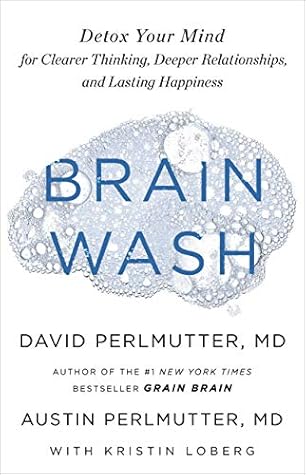More on this book
Kindle Notes & Highlights
Read between
May 10, 2020 - May 8, 2021
Participating in our modern consumerist existence is physically changing our brains. How, exactly? It is cutting off access to the highly evolved part of the brain that lets us see the big picture and make well-thought-out decisions. Simultaneously, it is strengthening the pathways that make us impulsive, anxious, fearful, and constantly craving a quick fix.
when you can take control of your brain’s wiring, you can build a system that continues to make those good choices.
Aristotle was right when he wrote “Man is by nature a social animal,”
the prefrontal cortex that is credited with higher-order brain functions
if we choose to engage in activities that constantly bombard us with negativity or provoke a sense of fear, our brains will be rewired to respond to this negativity and fear-driven state.
Dalai Lama, “The brain we develop reflects the life we lead.”
The most addictive drugs, for example, cause brain cells to massively increase the release of dopamine, along with other pleasure-inducing brain chemicals. The brain compensates for this by lowering the production of dopamine and decreasing the number of available receptors for it to bind to.
Food Is Behavioral Information The idea that what we eat threatens our ability to access the prefrontal cortex should be a game changer in itself.
It means quite literally that our diets can put us at risk for becoming more self-centered and less empathic.
a review of available studies has shown that internet addiction in adults is associated with almost double the risk of suicide and nearly quadruple the risk in those under the age of eighteen.
photos with the most likes appeared to increase activation in the parts of the brain involved in reward pathways.
Time restricted. Create and abide by a minimum window of time for accomplishing your goals.
Intentional.
Mindful.
bringing awareness to the way you’re using these technologies while you’re using them as well as awareness of the way they are affecting you.
Enriching.
high levels of empathy are associated with life satisfaction, rich social networks, healthy relationships, heightened workplace performance, and greater overall well-being.4
nurturing relationships strongly support our overall health and longevity.
“Our relationships and how happy we are in our relationships has a powerful influence on our health.
Taking yourself off the grid, even for a short period of time, gives your brain a chance to come up for air.
nature encourages mindfulness, which is a major way to fend off disconnection syndrome.
nature helps foster mindfulness, and mindfulness allows us to feel more connected to nature.
attention restoration theory (ART),
nature, in addition to honing our ability to focus and concentrate, helps renew our attention after we exert mental energy
one key takeaway from all these studies is that nature heals and connects.
Nature is a main ingredient in your brain wash, and when the health benefits of nature are so easy to realize, the “green pill” should
be a standard prescription for all of us.
the terrifying potential of our typical diet to reshape our thoughts, actions, and overall brain makeup.
Development of agriculture → decreased food diversity → more disease
Foods can enhance or reduce inflammation.
Foods can enhance or reduce our bodies’ ability to detoxify and create important antioxidants.
Food may be the most powerful tool for changing how we behave and think.
The scariest part? The foods themselves may change the development of children’s brains.
two general ways food affects our thoughts and decisions: (1) food affects inflammation pathways that reach the brain and change its wiring, and (2) food affects addiction circuitry. These two processes go hand in hand.
the wider the waist circumference, the stronger the activation in the addiction circuits of the brain. Our fat cells are accomplices in keeping us hooked, ultimately blocking us from connecting to our prefrontal cortices and thus preventing us from making good dietary decisions.
an overactive reward system and an underactive control system could be two of the major players that determine whether we eat healthful or unhealthful foods.
“a highly significant correlation between sugar consumption and the annual rate of depression.”40
antidepressants are thought to work in part by increasing serotonin levels in the brain.
logging fewer than six hours of sleep a night was associated with a 44 percent increase in the risk of developing full-blown diabetes, while getting fewer than five hours a night increased the risk by 68 percent.8
the American Journal of Clinical Nutrition put a number on the increased caloric intake that results from sleep deprivation: three hundred extra calories a day.12
exercise rewires and restructures the brain for better functioning and higher-order thinking.
the prefrontal cortex is preferentially activated by exercise.
“humans evolved to be adapted for regular, moderate amounts of endurance physical activity into late age,”
“humans also were selected to avoid unnecessary exertion.
exercise is effective at helping reduce symptoms of depression.24
“exercise is safe and efficacious in reducing depressive symptoms in older people.
even one hour of physical activity a week could prevent 12 percent of future depression cases.
researchers at Harvard University instead suggested that too little physical activity causes depression,


